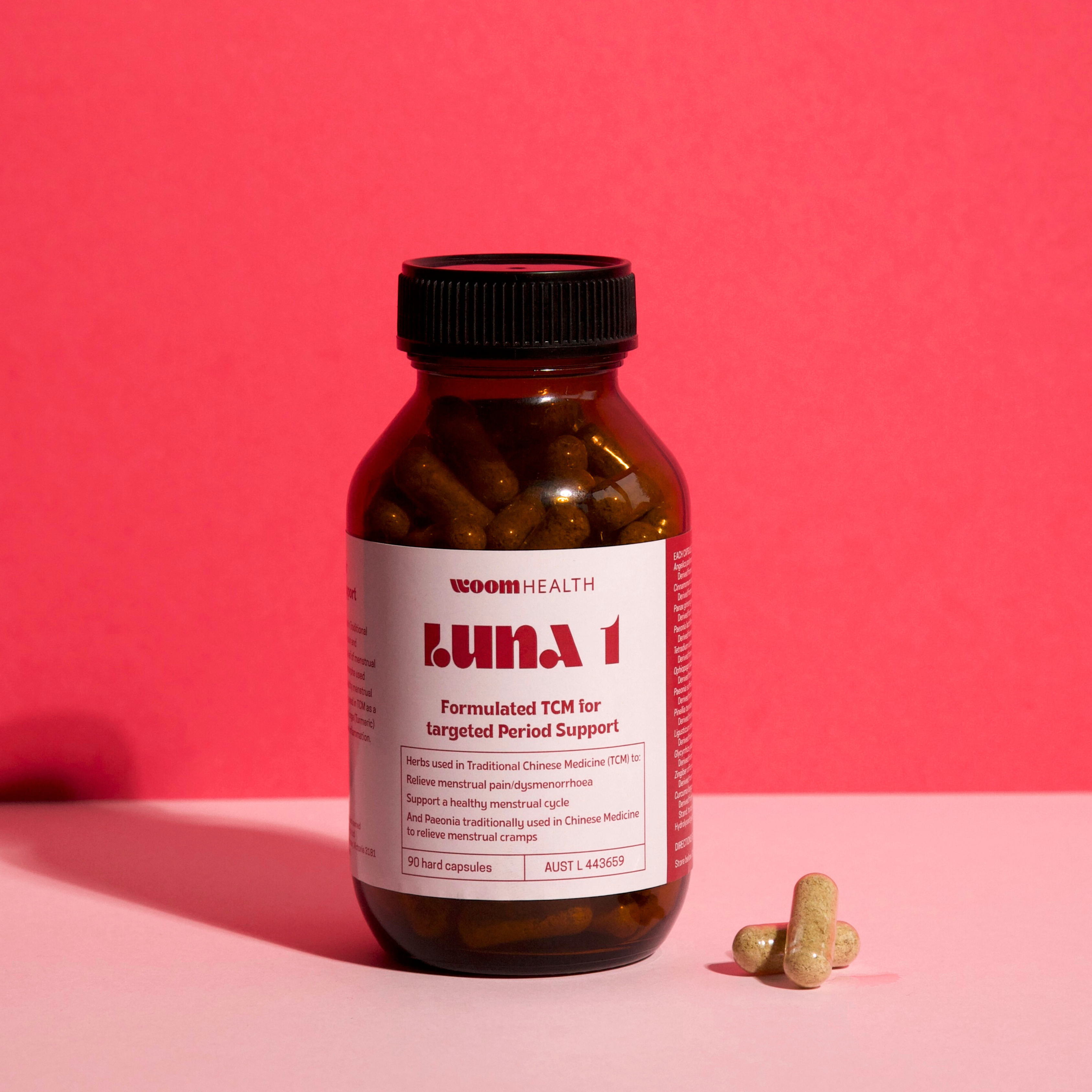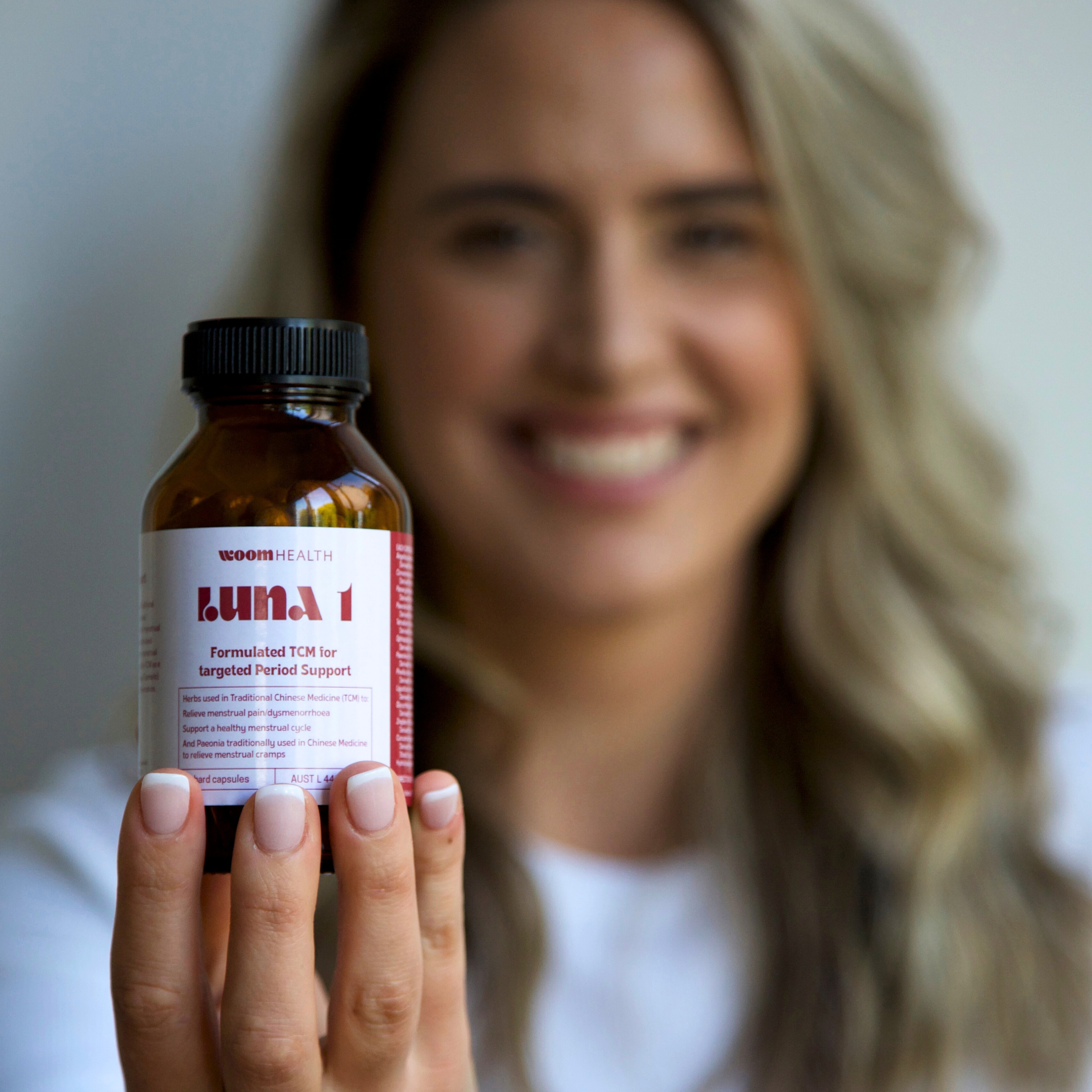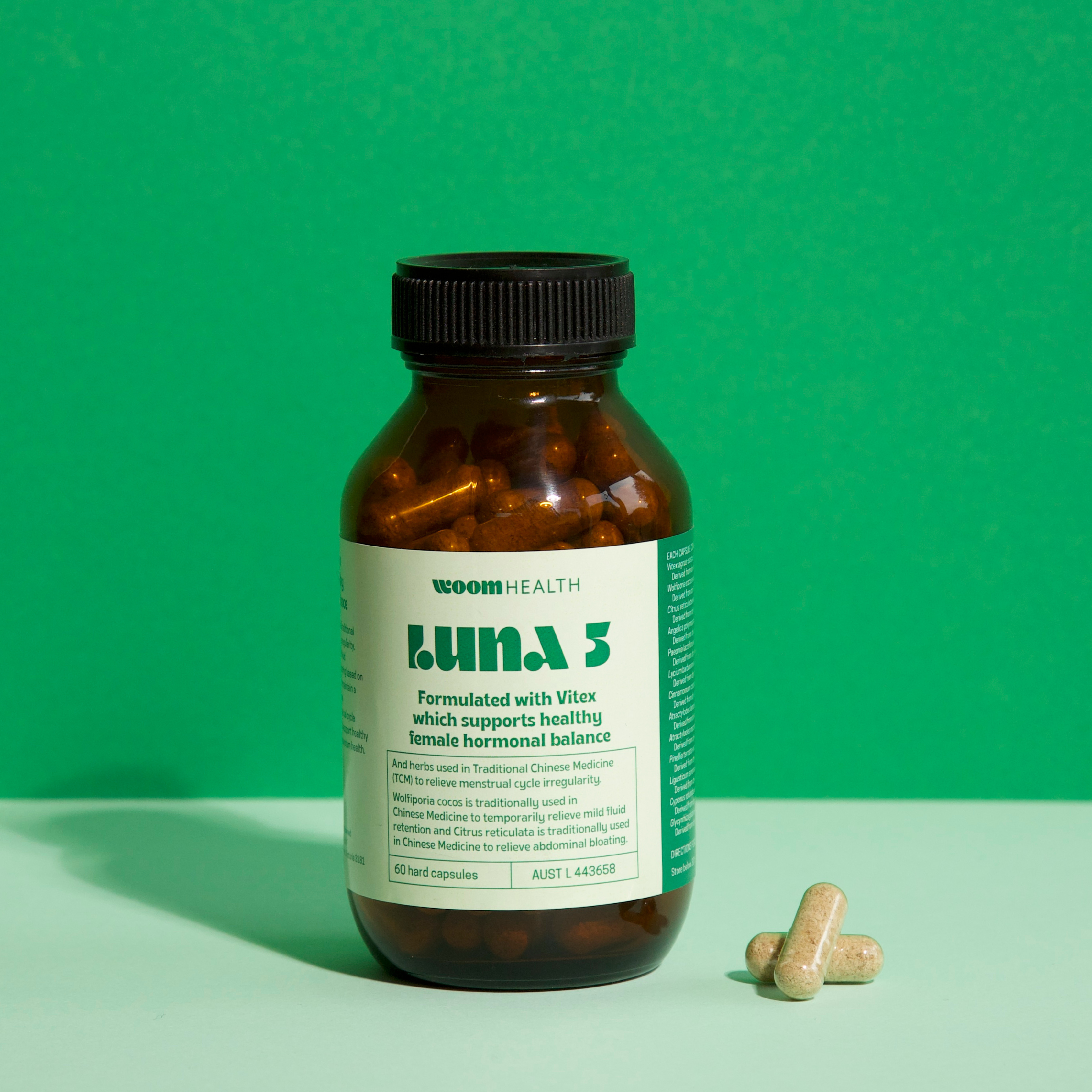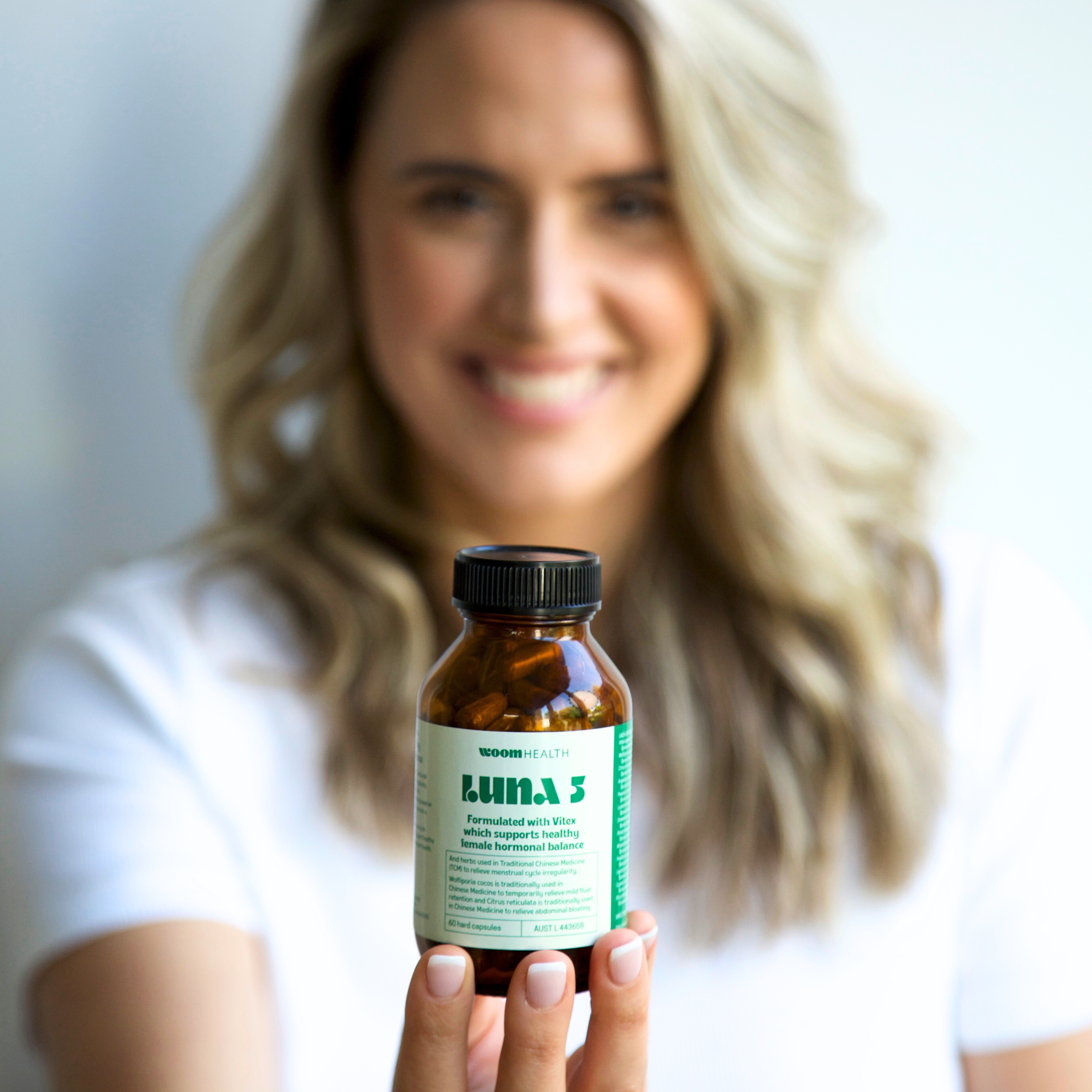Your Menstrual Cycle and its Four Phases

From puberty to menopause, your menstrual cycle is a huge part of your life. But it’s so much more than just that once-a-month bleed. Understanding your cycle is important so you can learn the best ways to support it and take control of your overall health.
So what is the menstrual cycle? And what is happening in your body that makes it bleed?
In short, the menstrual cycle is the hormonal cycle that your body goes through every month to prepare for a possible pregnancy (which occurs only during implantation when a female egg is joined with a male sperm).
It is actually made up of two cycles – the ovarian cycle and the uterine cycle. These two cycles and their phases are interlaced to make up your entire menstrual cycle.
The menstrual cycle begins on the first day of your period and ends when your next period arrives. In Chinese medicine, the average cycle is one lunar month (28 days long) but cycle lengths vary from woman to woman, and one that is between 26-35 days long is still considered normal. Your cycle can also change in length throughout your life.
Because you are a cyclical being, your body reflects patterns and cycles found in nature. Just like the four phases of the moon or the four seasons, your menstrual cycle is also broken into four main phases.
Your uterus, ovaries, and your brain (specifically, the hypothalamus and the anterior pituitary gland) communicate with each other and release certain hormones (chemical signals) to keep these phases of your cycle going each and every month.
The four most important hormones that you should know are:
- FSH – Follicle Stimulating Hormone (Stimulates the growth of eggs in the ovaries)
- LH – Luteinising Hormone (Triggers ovulation and the growth the corpus luteum)
- Estrogen (Develops and maintains the female reproductive system and the growth of the uterine lining)
- Progesterone (Helps build the uterine lining and is necessary to maintain the early stages of a healthy pregnancy)
Let’s take a look at each phase of your menstrual cycle so you can understand what is happening in your body.
The four phases of your menstrual cycle
Menstruation
Days 1-5 of your cycle
This is the phase when you get your period.
If implantation does not occur, a drop in estrogen and progesterone triggers your endometrium (the lining of your uterus) to shed out through the vagina – resulting in your period. In Chinese medicine, a normal period lasts 2-5 days.
Once your period is over, your uterus builds up your endometrium to prepare for a possible pregnancy.
This part of your monthly cycle is a symbol of renewal. This bleeding is a time for our body to detox, cleanse, and release and it’s a symbol of the cycle of life – life, death, rebirth. Each month during your period you are given the chance to shed the old and embrace the new!
Follicular phase
Days 5-13 of your cycle
The length of this phase can vary depending on the length of your cycle.
The pituitary gland in your brain releases FSH which tells your ovaries to grow about 5-20 egg-containing follicles (small sacs). During the last half of this phase, only one ovary and only one follicle will form a fully mature egg (ovum). This dominant follicle will suppress the growth of all the other follicles and the dominant egg will be the only one to go through your ovulation cycle.
The dominant follicle releases estrogen and this hormone will peak right before ovulation.
Just as during your period you are given the chance to embrace the new, the follicular phase is a chance to restore yourself physically and mentally for a happier, healthier you. An increase in estrogen boosts positive energy and increases libido. Many women feel more productive during this time.
Ovulation
Days 10-18 of your cycle
This short phase marks the middle of your cycle and only lasts about 12-24 hours.
Rising estrogen levels from the dominant follicle switch off the production of FSH, and increase the amount of LH. When the levels of LH are high enough, the dominant follicle is triggered to release the mature egg from your ovary.
Once the egg is released, it travels down your fallopian tube for potential fertilization and will dissolve within 12 to 24 hours if it is not fertilized.
During this phase, your cervix will discharge mucus that will look similar to egg whites. It will be wet, slippery, clear, and stretchy. The purpose of the mucus is to capture sperm from a man. It’s texture and pH levels protect sperm and it’s consistency helps move the sperm towards the egg in your fallopian tube.
If you are trying to conceive, this is the time to do it! Sperm can live inside the female body for up to 5 days. Even if you have sex a few days before or after ovulation, there may be some sperm left in your body to fertilise the egg that moves down your fallopian tube.
Luteal phase
Days 15-28
While the follicular phase varies in length, the luteal phase is stable and generally lasts the same amount of days for each woman.
Once the egg is released from the ovary, the empty follicle that released the egg is stimulated by LH and forms a new mass of cells called the corpus luteum. The corpus luteum produces progesterone which is necessary to prepare the uterus for implantation and for the continuation of a pregnancy.
During this phase, if a sperm fertilizes the egg, the fertilized egg will move all the way through the fallopian tube into the uterus where it will implant in the endometrium. If this happens you would be pregnant. If no fertilization takes place, the corpus luteum will break down, estrogen and progesterone levels will fall, and your endometrium will break down and shed and your period will begin.
Progesterone peaks in the middle of this phase and it’s the hormone responsible for many premenstrual symptoms such as headaches, bloating, acne, and mood swing. If your hormones are unbalanced these symptoms can become much worse. Luckily – we have a tincture for that. 😉
At what age do menstrual cycles begin?
Typically young girls start their menarche (first menstrual cycle) as early as the age of 12 and will continue to have a monthly period (unless pregnant or because of an illness) until they reach menopause. Menopause usually happens around the age of 50.
Each female body is different and some young girls can start their periods earlier or later than others and some women may experience menopause earlier or later than other women.
The importance of your menstrual cycle
Your menstrual cycle can have an effect on every part of your body. You might notice changes in your mood, body temperature, metabolism, energy and libido, and immune system during the different phases of your cycle because of the rise and fall of hormones.
This is your body’s way of preparing for pregnancy. If you are having sex, paying attention to your menstrual cycle can help you either prevent or achieve pregnancy.
If you take hormonal birth control such as “the pill”, it prevents certain steps in your cycle from happening to prevent pregnancy.
Periods are more than that time of month for chocolate and heating pads
Your period is your 5th vital sign. Just like your other 4 vital signs – body temperature, blood pressure, heart rate, and respiratory rate – your period is a sign of health.
It means that your body went through all the phases of the menstrual cycle. It ovulated, released an egg, and built up the lining of the uterus as it should. It means your body is healthy and prolific.
Here’s the recap
- Your menstrual cycle begins on the first day of your period and ends when your next period arrives.
- Your brain, ovaries, and uterus send signals to each other through hormones and are the cause of all the changes that take place in your follicles (sacs in your ovaries) and in your uterus.
- In the first half of your cycle, the lining of your uterus sheds and rebuilds and your ovaries prepares an egg to be released for fertilization.
- In the second part of your cycle, your uterus prepares to receive a fertilized egg for implantation, or to shed it’s lining if implantation doesn’t take place.
Now that you know what your menstrual cycle is and what your body is doing throughout each of its four phases, take notice of how you feel during each one so you can take charge of your menstrual health.








